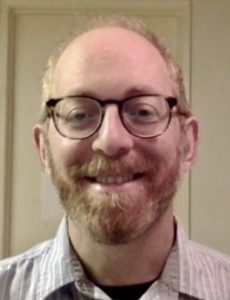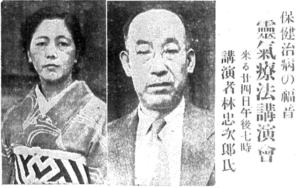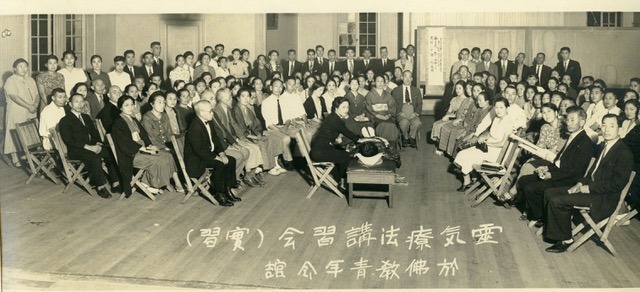What changes, Reiki practice or us?
We, the practitioners, change if we practice daily self Reiki diligently. And why wouldn’t we? That’s what a spiritual practice is for, to improve our state so we’re steadier and more content, more willing and able to transform our wrong understanding and heal the undigested emotion lingering within us so we can be happy, clear, and compassionate, regardless the situation.
But spiritual practices also change, if they’re around long enough, especially if they jump cultures, and even more so when they land in cultures that don’t have a strong spiritual practice tradition (which of course is where they’re most needed).
How spiritual practices change
Spiritual practices such as meditation and Reiki have been exported to many other countries. On the surface, it seems those practices adapt naturally to each culture. The question is always whether the integrity of the practice is maintained in the process of adaptation. That’s more likely to be the case where they are practiced with respect and diligence, which in turn is more likely when the culture receiving the practices already has a tradition of spiritual practice.
History gives us a relevant example. As Buddhism spread from northern India throughout Central and East Asia more than a thousand years ago, new forms developed, such as Zen and Tibetan Buddhism. The fact that these forms are practiced alongside the southern Asian Theravada Buddhism and that they all share many common values indicates those changes were adaptive, not arbitrary, that they occurred organically over time, as the practices were carried with respectful gratitude and integrated into different cultures.
Buddhism morphed over centuries, reaching more people while maintaining its core values. We can’t count on that being true for Reiki practice.
When speed becomes an impediment
The speed with which ideas can now be disseminated makes it much easier for misinformation and arbitrary changes to become fashionable and spread, changes that came from someone’s mind rather than developing organically through diligent practice over time, changes untested by actual practice.
Change is inevitable, but is change good? That depends. Changes that occur organically as committed practitioners reap the benefits of dedicated practice over time don’t seem to be a problem.
Arbitrary changes, however, often have unforeseen repercussions. These “side effects” are unforeseen solely due to the short sightedness of the practitioners who don’t value traditional wisdom and feel it’s their right to make changes on a whim.
This isn’t to say change is always a bad thing and never warranted. Not at all. Tradition can calcify and need to be revived. That kind of change isn’t what’s being addressed here.
Capricious changes can involve rearrangements that drop out an important detail. They could be additions that might actually weaken the practice or make it harder to practice. What good is a practice that’s so complicated it isn’t practiced?
This is what we’re seeing with Tibetan Buddhism. The destruction of Tibetan monasteries led to the spread of Tibetan Buddhist practices throughout the world, and countless people have benefited.
But at same time, the complex Tibetan rituals practiced by monks whose lives are devoted to spiritual practice can’t be transplanted from monastics to contemporary householders. As the population of monasteries declines, the practices need to be accessible to lay practitioners or the lineages will die out.
Who changed Reiki practice?
Many Reiki practice changes cannot be traced to their source because Americans (and others) made changes without acknowledging having made changes. That’s brought a lot of confusion to Reiki history and lineages.
People often say, “I’m in Takata’s lineage” without realizing their practice is very different from what Hawayo Takata taught. (For example, Takata didn’t teach chakras, which aren’t part of the Japanese system.)
Even the most traditional Reiki practitioners who say they practice Usui Reiki Ryoho likely don’t practice as Reiki lineage founder Mikao Usui taught. The organization Usui started in Japan, the Gakkai, exists today and has about 500 members. It’s likely even the Gakkai’s practices have changed somewhat during its nearly 100 years.
Reiki history in the United States
Until recently, the United States has not had a strong tradition of independent spiritual practices. Spiritual practices such as prayer and Bible study were affiliated with religions and protected from change by religious dogma. If you grew up in a religious family, it likely never occurred to you to change the prayers you were taught by your parents or teachers, or to edit the Bible.
Reiki practice has no dogma and isn’t protected by religious traditions or authority, so it was fair game for the American penchant for innovation.
American Reiki students didn’t know that changing a spiritual practice arbitrarily is quite different from the adaptations that happen organically through practice over long periods of time, and that change for the sake of change weakens a practice. And given the changes were usually in the direction of a more complicated ritual than what Takata taught, most of the post-Takata changes made the practice less accessible. Whereas Tibetan Buddhist practices had to be made more accessible for householders, Takata’s practice already had the advantage of simplicity and accessibility, making it possible for people living worldly lives to practice regularly and deepen their experience.
But Hawayo Takata also changed Reiki practice, as had her Reiki master Chujiro Hayashi, a direct student of Reiki founder Mikao Usui. The adaptive changes made by Takata and Hayashi came from their years of diligent practice. Those changes are a valuable part of Reiki history, perhaps critical to Reiki practice still being available today. They were not arbitrary changes made by restless minds.
How exactly did Takata change Reiki practice? To help address that question, I turned to my colleague, Reiki history scholar Justin Stein, Ph.D.
Introducing Justin Stein
Justin Stein* learned Reiki practice in 2001. His daily self practice lapsed after a few years but he returned to it when he decided to devote his academic career to the history of Reiki practice.
Justin’s doctoral dissertation details how Reiki practice first formed in Japan and how it has morphed over the years. His research is especially valuable because he writes as both a practitioner and an academic. All research involves judgment calls, and Justin’s years of Reiki practice help him discern what matters and what is of less import.
One of the things Justin’s research has focused on is the period of Takata’s apprenticeship under Hayashi, starting in Tokyo in December 1935. During this period, when Takata moved from being a patient at Hayashi’s Reiki clinic to being one of the practitioners there, Hayashi recognized her as an exceptional student. He invited Takata to move into his family’s home, becoming what the Japanese call an uchideshi (“inner disciple”). She stayed with the Hayashis for some months, practicing daily in the clinic and making house calls. Before Takata returned to her home in Hawaii in June 1936, Hayashi gave her the shinpiden initiation, equivalent to what we now call the Master Degree.
Hayashi wrote on Takata’s shinpiden certificate that, although she had not studied Reiki practice for “a long period of time, due to a combination of natural talent and sincere enthusiasm, she diagnoses quickly, reliably gives effective treatments, and has the ‘wonderful ability’ (reinou) to cure every type of illness” (Justin’s translation).
Takata and Hayashi bring Reiki practice to Hawaii
 Hayashi spent 5 months in Hawaii helping Takata establish Reiki practice. She gave many classes and presentations under the watchful eye of her Reiki master. As he left Hawaii to return home in February 1938, Hayashi made a public announcement that Takata was a fully credentialed Reiki master, and the only one outside Japan.
Hayashi spent 5 months in Hawaii helping Takata establish Reiki practice. She gave many classes and presentations under the watchful eye of her Reiki master. As he left Hawaii to return home in February 1938, Hayashi made a public announcement that Takata was a fully credentialed Reiki master, and the only one outside Japan.
Takata’s presentation of Reiki practice continued to develop during the remaining 42 years of her life and career. She made adjustments that seem geared to support her American students, knowing they not only lacked the cultural context in which Japanese students learned Reiki practice, but also were unlikely to get as in-depth training and follow-up as Japanese students received.
How Takata changed Reiki practice to support non-Japanese students
Within 10 years, Takata was teaching the foundation treatment, a standard protocol that was the basis for all treatment. Takata encouraged students to follow their hands while using the protocol, lingering where they sensed the need or experienced sensation.
During the 1970s, Takata settled into the “universal life force” or “universal life force energy” translations now often used to define Reiki (unfortunately too often given as pat answers that stop conversation rather than stimulate contemplation of what universal life force energy is) .
Takata’s translations of the Reiki Principles (also called the Reiki Precepts) morphed over time. A 1948 version sounded like an addendum to the Ten Commandments, but was later softened to be more conversational. Still, the translation she presented of the middle precepts bears no resemblance to the Japanese original, “with thankfulness, work diligently.”
Justin offers insightful perspective on this change. By the 1970s, many of Takata’s students were hippies or had a youthful counter-cultural bent that didn’t respect authority or tradition. But in spiritual practice, after you’ve chosen to learn a practice from a teacher, there comes a time to settle into a deferential relationship with that teacher, to follow her guidance with gratitude and respect.
Japanese and Japanese American students didn’t need to be taught that, as respect for teachers was a strong cultural value with which they had been socialized from an early age. But Justin points out that Americans didn’t have the same respect for authority or traditional values. Takata’s addition of the precept “honor your parents, teachers and elders” may have been aimed at giving her students much needed guidance, not only for their sake, but also to protect Reiki practice going forward.
Japanese students, for example, would respect their teacher too much to make arbitrary changes to the practice or (gasp) to the initiations. They would understand that their teacher had a more informed perspective than theirs, and that the best way to advance would be to practice diligently as they were taught.
In the 1970s, Takata began telling her students a story detailing how Usui had given Reiki treatment to beggars and helped them start a new life, only to have them return to the beggar colony because life in the work-a-day world was too hard. This was not a factual account, but a teaching story to introduce her American students to Japanese values that would support them and the practice.
Justin views the story of Usui giving treatment to beggars without requiring anything from them as communicating the importance of reciprocity. That concept, sometimes referred to as an exchange of energy, is another value Japanese students would have but Americans would not necessarily, or at least not to the same degree.
One Reiki practice constant
One thing that did not change from Usui through Takata, however, which she also expresses in the story of Usui helping the beggars, was the primacy of healing what I’ll call the heart/mind. The Japanese term is kokoro and (as with Reiki), there simply isn’t an English equivalent.
Balancing the heart/mind sets the foundation for lasting healing. This isn’t recognized in conventional (evidence-based hospital) medicine with its focus on body parts, but it’s understood in every traditional, indigenous medical system I’ve come across (I’m not an academic, but medical anthropology is a lifelong interest of mine). Traditional African medicine states explicitly there is no lasting benefit without a change in consciousness, aka balancing the heart/mind.
Reiki is a spiritual practice empowered by initiations carried by a lineage. At every level, the benefits of Reiki practice stem from healing the heart/mind. That value has remained constant even as superficial changes were made to Reiki practice.
Authenticity — why Reiki history matters, and when it doesn’t
Our understanding of Reiki practice can be enriched by knowledge of those who came before us, especially our Reiki founder, Mikao Usui, and the masters who brought Reiki practice from Japan to the United States, Chujiro Hayashi and Hawayo Takata. Yet everything needs to be seen in perspective.
Western Reiki students and professionals often look to their lineage to authenticate their practice. As more information about Reiki history and especially Usui’s practice becomes available, there is a tendency among some American Reiki practitioners to value the new knowledge of Usui’s practice as the real McCoy, as inherently more legitimate and authentic.
Too much outer focus on Reiki history misses the point of spiritual practice and healing the heart/mind. We don’t have to practice precisely as Usui did to reap the benefits of the practice lineage he started. But we do have to practice, and practice consistently and with gratitude: with thankfulness, work diligently.
Any sense of less-than cannot be removed by buying another certificate or adding another lineage to your Reiki family tree. The authenticity of practice is found in the healing that happens within us, that settling of the heart/mind, as we dive into daily self practice diligently over time.
A practice that deviates somewhat from that of Usui, Hayashi or Takata isn’t wrong or less than; it’s different. And sometimes it’s so different it might warrant being called something other than Reiki practice, but that doesn’t negate its value.
If we don’t practice as Usui, Hayashi or Takata did, is it sufficient to rely on being in their lineages to authenticate our practice?
Rather than looking to such outer hallmarks as a pedigreed lineage, when we commit to daily self practice of the practice we have, we discover authenticity in our own hands and the increasing steadiness of our heart/mind.
It’s so very American — memorialized on social media as FOMO — to forever look outside for fear of missing out on something better. Instead, we could turn inward through regular self practice and discover just how good what we already have is.
*Justin B. Stein (PhD, Study of Religion, University of Toronto) is an instructor in Asian Studies at Kwantlen Polytechnic University. His doctoral thesis (2017) examined the development of Reiki in mid-twentieth-century Japan, Hawaii, and North America. He has written several scholarly articles and given numerous presentations on the subject. You can read some of Justin’s scholarly articles online or connect with Justin on Facebook.
_____________________
I cambiamenti nel Reiki is an Italian translation of this article you can print and share as is, without copying or changing the content or presentation in any way.
_____________________
INVITING HAPPINESS: Engaging the Reiki Precepts live, interactive online retreat


Thank you so much for providing this information. It was very informative as I have been a master since 2003, and was not aware that beggar city was just a story. I enjoy your bi-weekly webinars very much. I am very grateful that you give this time for people all around the world! Namaste
So happy you found it helpful, Tracy. But I wouldn’t say the beggar colony story was “just a story.” It was an important teaching tool that helped Americans value the practice and healing the heart/mind. It’s very common for traditional cultures to convey their values to the next generation through stories. It just wasn’t so factual.
I look forward to seeing you on the community Reiki self practice sessions.
I have always admired your simple and down to earth approach to Reiki, and your success in bringing it into conventional western medicine and mainstream hospitals. I received my Reiki training starting in 2001 with my yoga teacher who was very traditional in both practices and it changed my life. She required self practice and did not rush through attunements. I did not get my Reiki Master attunement until she was satisfied that I was serious enough in my dedication and practice, which wasn’t until 2003. I felt that she was following the wishes of Master Usui as best she could, and I sincerely appreciate the gift she gave me. Over the years I have met many Reiki practioners through shares, and was sometimes astounded by the differences in training, protocols and symbols. I kept an open mind, but I did have a problem with people calling it Reiki when they had combined it with a number of other modalities because it confused my clients who sometimes insisted that I was not doing “authentic” Reiki because I didn’t use crystals or dowsing rods or chant mantras during treatments as someone else had. So I enjoyed this article immensely because it put the process of change in perspective and and helped me be grateful and comfortable with my personal journey. I have accumulated quite a few Reiki books over the years, but your book is my go to for anyone interested in learning Reiki. Thank you so much for your wisdom and dedication Pamela!
Thank you for your kind words, Cheryl. It’s always gratifying to know my work is helping.
I found the “Reiki Changes” article most insightful and moving. The power of your wisdom along with the history shared by Justin is most invaluable. It touched every nerve in my body. Thank you.
I love Japanese culture since my teen years growing up in Colombia. Don’t ask me why. The way you bring to light the difference among cultures carries lots of knowledge. It is like food: Japanese food in Japan is different than in the USA. Food needs to adjust to the new culture it enters but maintaining a degree of flavor.
I love how you well you brought up the heart-mind connection as a foundation of Reiki practice. Again, an article filled with wisdom and as always, much respect. Thank you again. Have a great weekend.
So happy you found the article helpful, Margarita.
And thank you for mentioning how food changes as cuisines are brought to new cultures. Such a meaningful observation!